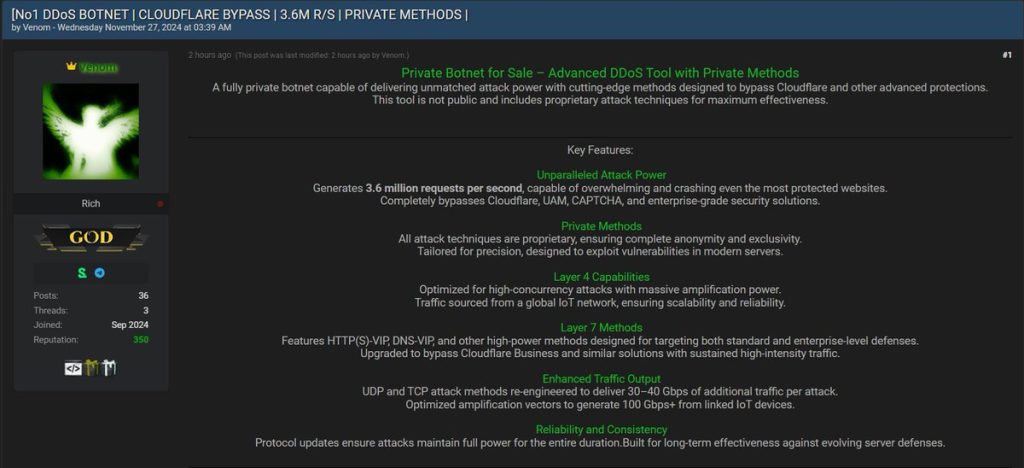A recent development in the cybercrime world has caught the attention of security experts: a threat actor is reportedly selling an advanced private botnet on the dark web.
This botnet is said to possess sophisticated capabilities, making it a formidable tool for launching distributed denial-of-service (DDoS) attacks.
The sale of such a powerful tool raises significant concerns about the potential for large-scale cyberattacks targeting various sectors.
Sophisticated DDoS Capabilities
According to DarkWebInformer’s recent post, the advertised botnet is claimed to have advanced DDoS capabilities, specifically engineered to bypass defenses employed by services like Cloudflare and other enterprise-level security solutions.

This botnet can deliver up to 3.6 million requests per second, a testament to its potency in overwhelming targeted systems.
It utilizes proprietary Layer 4 and Layer 7 attack techniques, which are designed to exploit different layers of network protocols, making it versatile in its attack methods.
Technical Specifications and Attack Methods
The technical specifications of this botnet highlight its capacity for causing significant disruption.
It reportedly includes UDP/TCP amplification and HTTP(S)-VIP methods, which are techniques used to increase the volume of traffic directed at a target, thereby enhancing the effectiveness of a DDoS attack.
These methods can generate over 100 Gbps of traffic, a level that could incapacitate even well-protected networks.
The sale of such an advanced botnet poses serious implications for cybersecurity.
Organizations across various industries could be at risk if this tool falls into the hands of malicious actors with the intent to disrupt services or cause financial harm.
The ability to bypass robust security measures means that traditional defenses may not be sufficient, necessitating enhanced vigilance and potentially new strategies in cybersecurity defense mechanisms.
This development underscores the ongoing arms race between cybercriminals and security professionals, highlighting the need for continuous innovation in defensive technologies.
Also Read: